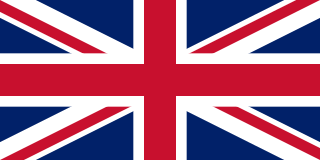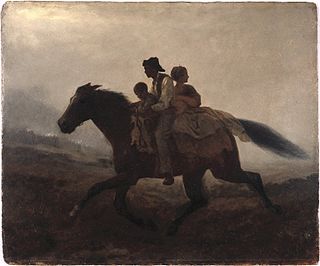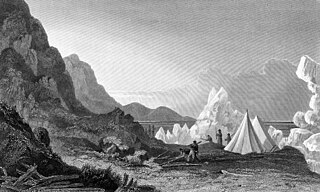 W
WBritish North America comprised the British Empire's colonial territories in North America from 1783 to 1907, not including the Caribbean. The Atlantic island of Bermuda was grouped with the Maritimes from 1783 until the formation of the Canadian dominion, and thereafter generally with the colonies in the British West Indies, although the Church of England continued to place Bermuda under the Bishop of Newfoundland until 1919. The term was first used informally in 1783, but it was uncommon before the Report on the Affairs of British North America (1839), called the Durham Report. These territories today form modern-day Canada and the Pacific Northwest of the United States.
 W
WBeginning with the 1763 Treaty of Paris, New France, of which the colony of Canada was a part, formally became a part of the British Empire. The Royal Proclamation of 1763 enlarged the colony of Canada under the name of the Province of Quebec, which with the Constitutional Act 1791 became known as the Canadas. With the Act of Union 1840, Upper and Lower Canada were joined to become the United Province of Canada.
 W
WCanadian Confederation was the process by which the three colonies of Canada, Nova Scotia, and New Brunswick were united into one federation called the Dominion of Canada on July 1, 1867. Upon confederation, what had formerly been called the Province of Canada was divided into the two provinces of Ontario and Quebec and thus, along with the provinces of Nova Scotia and New Brunswick, the new Dominion initially consisted of four provinces. Over the years since Confederation, Canada has seen numerous territorial changes and expansions, resulting in the current number of ten provinces and three territories.
 W
WThe Conestoga wagon is a specific design of heavy covered wagon that was used extensively during the late eighteenth century, and the nineteenth century, in the eastern United States and Canada. It was large enough to transport loads up to 3 tons, and was drawn by horses, mules, or oxen. It was designed to help keep its contents from moving about when in motion and to aid it in crossing rivers and streams, though it sometimes leaked unless caulked.
 W
WThe Coppermine expedition was a British overland undertaking to survey and chart the area from Hudson Bay to the north coast of Canada, eastwards from the mouth of the Coppermine River. The expedition was organised by the Royal Navy as part of its attempt to discover and map the Northwest Passage. It was the first of three Arctic expeditions to be led by John Franklin and also included George Back and John Richardson, both of whom would become notable Arctic explorers in their own right.
 W
WThe phenomenon of slaves running away, seeking to gain freedom, is as old as the institution of slavery itself. In the United States, "fugitive slaves" were slaves who left their master and traveled without authorization; generally they tried to reach states or territories where slavery was banned, including Canada, or, until 1821, Spanish Florida. Most slave law tried to control slave travel by requiring them to carry official passes if traveling without a master with them.
 W
WHome Children was the child migration scheme founded by Annie MacPherson in 1869, under which more than 100,000 children were sent from the United Kingdom to Australia, Canada, New Zealand, and South Africa. The program was largely discontinued in the 1930s, but not entirely terminated until the 1970s.
 W
WThe Mackenzie River expedition of 1825–1827 was the second of three Arctic expeditions led by explorer John Franklin and organized by the Royal Navy. It had as its goal the exploration of the North American coast between the mouths of the Mackenzie and Coppermine rivers and the Bering Strait, in what is now present-day Alaska, Yukon, the Northwest Territories, and Nunavut. Franklin was accompanied by George Back and John Richardson, both of whom he had previously collaborated with during the disastrous Coppermine expedition of 1819–1821. Unlike Franklin's previous expedition, this one was largely successful, and resulted in the mapping of more than 1,000 kilometres (620 mi) of new coastline between the Kent Peninsula and Prudhoe Bay, Alaska, an area that until then had remained largely unexplored by Europeans.
 W
WPost-Confederation Canada (1867–1914) is the history of a new nation from its formation to the outbreak of World War I in 1914. Canada had a population of 3.5 million, residing in the large expanse from Cape Breton to just beyond the Great Lakes, usually within a hundred miles or so of the Canada–United States border. One in three Canadians was French, and about 100,000 were aboriginal. It was a rural country composed of small farms. With a population of 115,000, Montreal was the largest city, followed by Toronto and Quebec at about 60,000. Pigs roamed the muddy streets of Ottawa, the small new national capital.
 W
WThis section of the Timeline of Quebec history concerns the events in British North America relating to what is the present day province of Quebec, Canada between the time of the Constitutional Act of 1791 and the Act of Union 1840.
 W
WThis section of the Timeline of Quebec history concerns the events in British North America relating to what is the present day province of Quebec, Canada from the passage of the Union Act to the passage of the British North America Act, 1867.
 W
WThis section of the Timeline of Quebec history concerns the events relating to the province of Quebec, Canada between the enactment of the British North America Act of 1867 and the end of the 19th century.